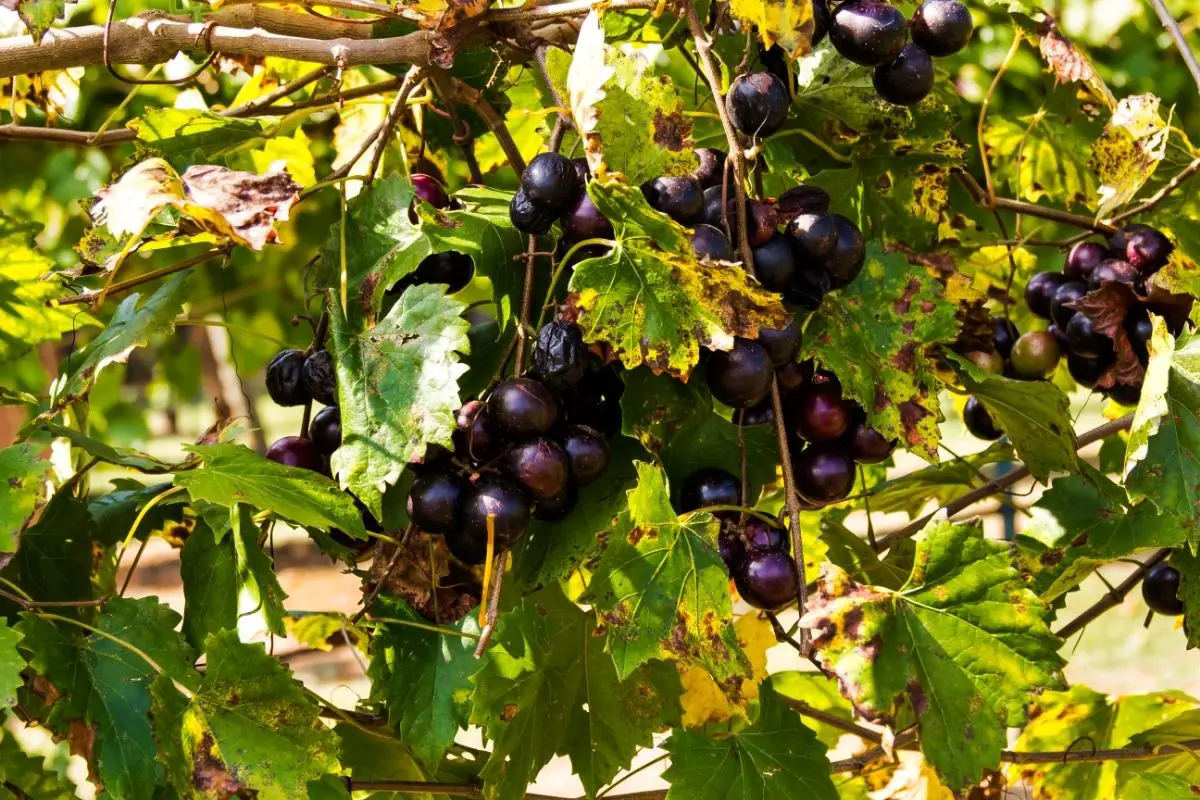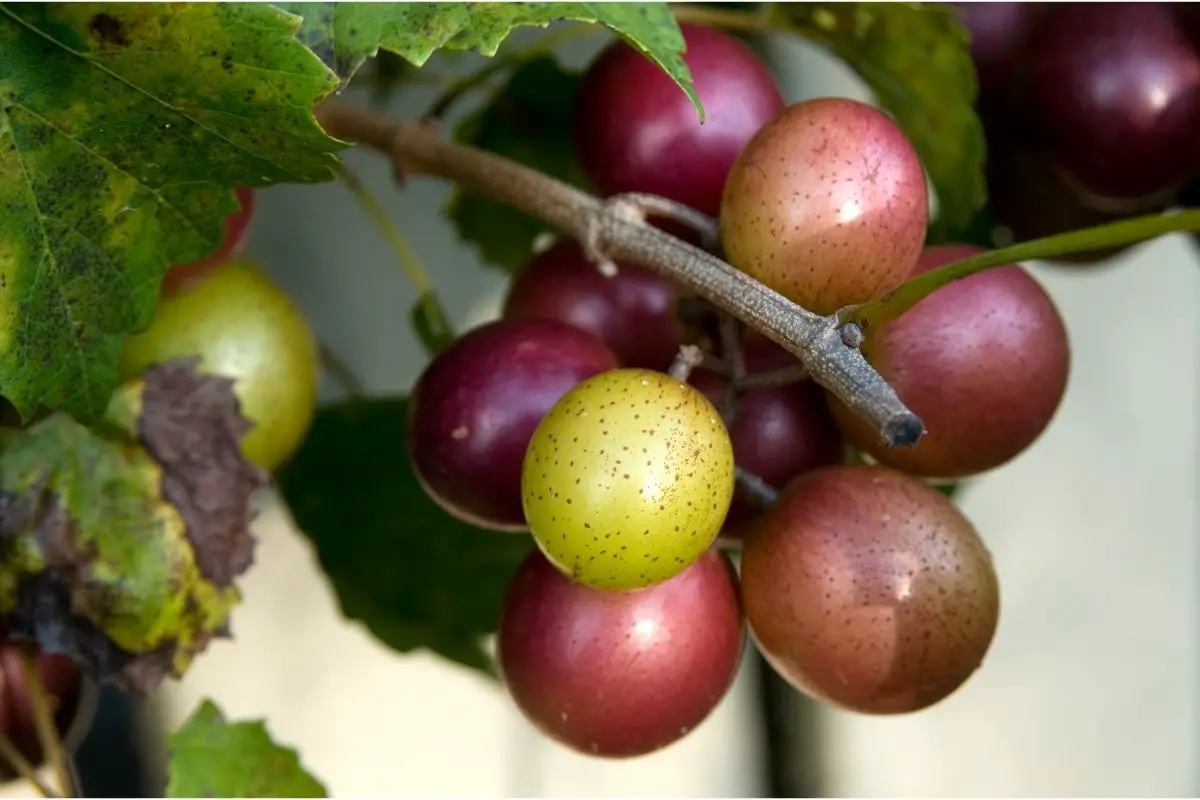Muscadine may not be a very well-known type of wine, but it can actually be quite delicious. And since it isn’t very popular, muscadine wine can be hard to track down. You may need to visit specialty stores or pay for expensive shipping online.
Luckily, muscadine wine is relatively simple to make yourself! The whole process only needs four ingredients: water, sugar, grapes, and yeast. Just keep in mind that fermenting wine takes time, so do plan accordingly.

We’ll cover more about muscadine wine below, including how to make it, how it tastes, and what its alcohol content is.
Muscadine Wine Basics
Muscadine wine is a type of sweet, decadent wine created from North American muscadine grapes. The grapes themselves are found in the Southeast areas of the US.
They are available in many colors, from the usual green to the more striking black. This is why the wines the grapes make are available in both red and white options.
One difference between muscadine grapes and other grapes is that they aren’t commercially made. This is why muscadine wine is so hard to find, as most bottles are either made within Southern states or brewed at home.
Muscadine Wine Flavors
Muscadine wine used to only give off one flavor, which was sweet. Muscadine grapes aren’t that sweet, which is why winemakers added more sugar to the brew. This gave the wine more flavor.
Times have changed since then, and now, muscadine wine is available in many different flavors. The majority of muscadine wine bottles are still sweet, but you can find less sweet options that contain less sugar. These have more of a fresh, invigorating taste.
Alcohol Content In Muscadine Wine
If you’re wondering how much alcohol is in muscadine wine, the answer depends on the amount consumed. Compared to other types of alcohol, muscadine wine doesn’t contain that much alcohol. Its average ABV is around 10%, which is less than the average wine’s ABV of 11.6%.
Of course, muscadine wine is more likely to get you tipsy compared to beer, but it’s a little bit gentler compared to other types of wine.
How To Make Muscadine Wine

Now that you know a little more about muscadine wine, we can get into how to make it yourself!
Here’s a simple recipe to try. Before you start, gather your ingredients. You will need the following:
- A quart of muscadine grapes, pre mashed
- 3 quarts of water
- Six cups of granulated sugar
- Seven grams of yeast
Now you can begin the method.
Step 1: Dissolving The Sugar
Begin by pouring all of the water into a large, glass container. Then add the sugar and stir until dissolved.
Step 2: Creating The Mixture
After the sugar has fully dissolved, you can now add the mashed grapes to the water. Gently sprinkle the yeast on top of the mix, then cover the container with cheesecloth.
Store in a cool, dark location and leave it alone for 24 hours.
Step 3: Let It Rest
Once the day has passed, stir the mixture thoroughly. Cover the container with the cheesecloth again, and place it back in the cool, dark location.
Repeat this step every day for seven days, ensuring that the container is fully covered each time. Always stir the mixture at the same time each day.
Step 4: Strain The Solution
After the seven days have gone by, strain the liquid into a large gallon container, ensuring that it has an airlock.
The airlock is necessary to stop oxygen from entering the container and interfering with the fermentation process. Fill the rest of the container up with water till it’s full.
Step 5: Fermentation
Place the container back in the cool, dark location, then leave it to ferment for six weeks.
Step 6: Straining
After the mixture has fermented for six weeks, strain it into a different, clean gallon container. Gently cap the blend down for three days to make sure fermentation has finished.
Step 7: Bottling
Once the mix has fully fermented, the wine can be bottled. Ensure that your wine bottles are fully secure to avoid air affecting the blend. Keep your wine in the fridge for the best results.
How Many Muscadine Grapes Are Needed To Make Wine?
If you’re wondering how many muscadine grapes you’ll need to make wine, the answer depends!
It’s difficult to gauge an actual number, but in most cases, six pounds of muscadine grapes will produce a gallon of wine.
Muscadine grapes can be as small as regular grapes or as big as golf balls, but weight matters more than size here. Remember that this is just a rough estimate, so keep experimenting!
Practice will give you a better understanding of the number of grapes you’ll need.
What Should You Eat Alongside Muscadine Wine?
As muscadine wines are usually sweet, they are usually paired with desserts. The sugar in both the drink and the food will complement each other well, but don’t limit your wine to just the dessert course!
Muscadine wine has an interesting flavor that goes well with meats. Just like its Southern origins, muscadine wine is great to enjoy alongside ribs and pork chops.
Are Muscadine Wine And Moscato Wines Similar?
They may have similar names, but muscadine wine and Moscato wines are quite different from each other.
Muscadine wine hails from North America, but Moscato wines are seen throughout Africa and Europe. Moscato originally comes from Italy and is even sweeter than muscadine wine.
Moscato wine may be more appealing to less experienced wine drinkers, but people who appreciate the notes in wine may prefer the unique notes in muscadine wine.
The Bottom Line
Muscadine wine is made from muscadine grapes from North America. It tastes quite sweet and is available in both red and white varieties.
Muscadine wine is hard to find, but making bottles at home is quite easy to do! You only need grapes, water, yeast, and sugar.
If you do plan on making your own muscadine wine, remember that fermenting takes six weeks, which doesn’t include the preparation time beforehand!
This isn’t much of a problem if you’re making it for yourself, but if you’re making bottles as gifts for other people, make sure that you plan ahead.
- Vevor Still Instructions - June 12, 2023
- Best Proofing Parrots For Home Distilling - February 1, 2023
- What Is A Porter Beer? - June 12, 2022
